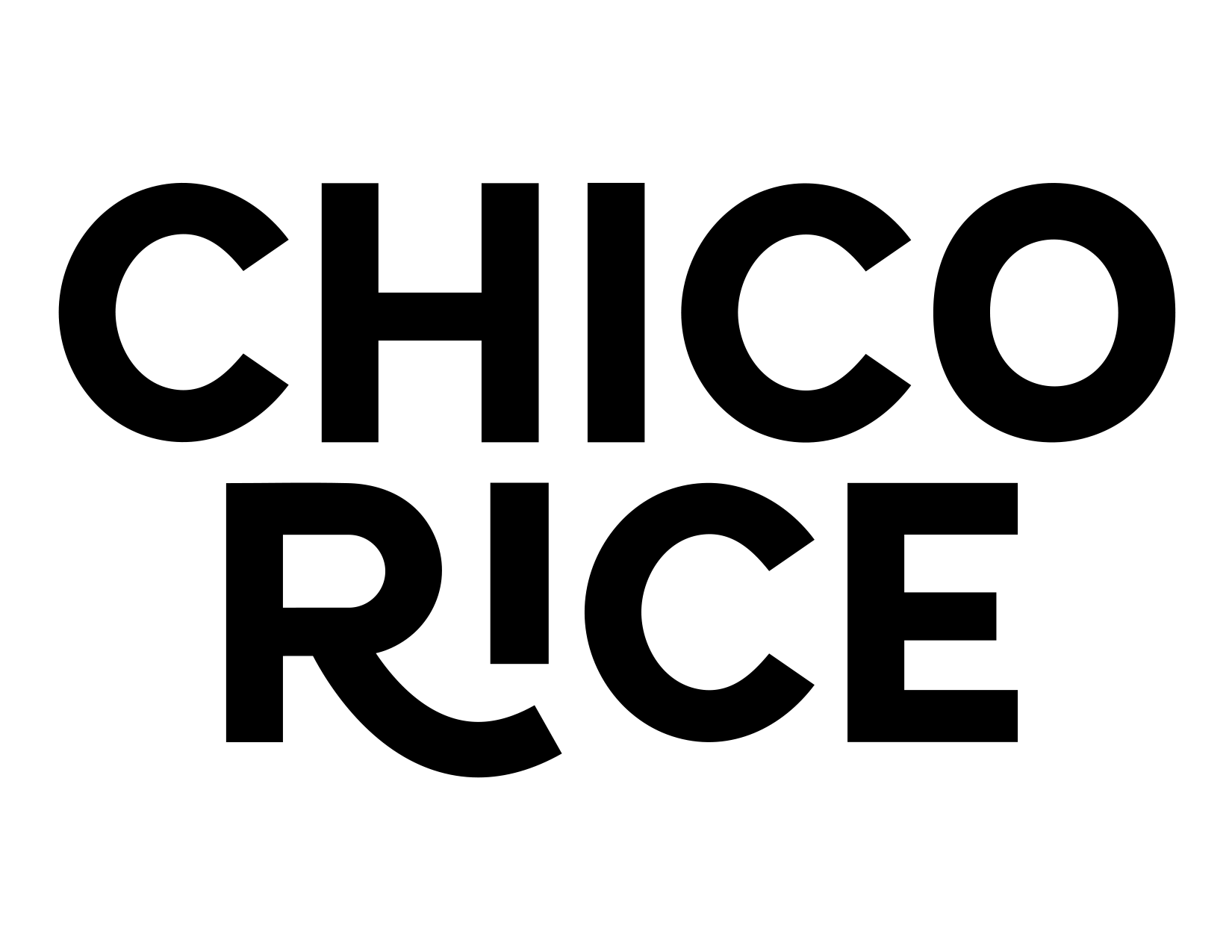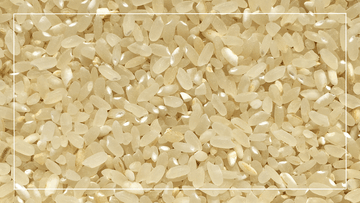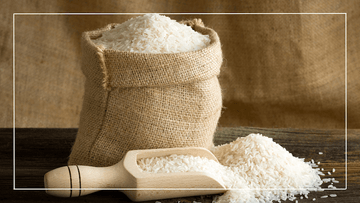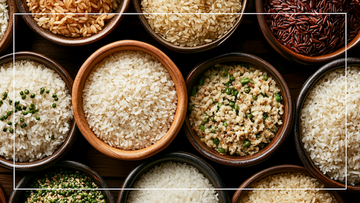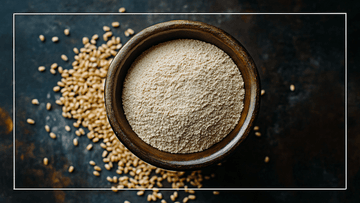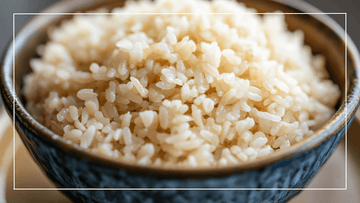When choosing which rice you need for your recipes there are many characteristics that you may consider: taste, texture, and health benefits.
The two popular rices that most people choose from are the smooth taste and texture of white rice, or the amazing health benefits in brown rice.
But what if you could get the best of both worlds? Enter haiga rice—the "Goldilocks" of rice, which offers a perfect balance between taste and nutrition.
Milled using the traditional Haiga Mai method, haiga rice provides a middle ground between fully milled white rice and nutrient-dense brown rice.
We will answer what is haiga mai rice, what makes the haiga mai milling process so unique, and why Chico Rice’s Blonde Milled California Japonica Rice should be your next go-to rice option.
➡️ Click here to shop Chico Rice’s Haiga Rice! ⬅️
What Is Haiga Rice?
Haiga mai rice is a Japanese milling style that is gaining popularity for its perfect blend of white rice and brown rice benefits.
Unlike white rice, which has the bran and germ layers removed, haiga mai is a type of rice with germ layer still intact, preserving essential nutrients during the milling process while discarding only the outer bran layer.
This creates a rice with germ that offers the soft texture of white rice while retaining much of the nutritional benefits found in brown rice.
This balance is what makes haiga rice the "Goldilocks" of rice—just right in terms of texture, flavor, and health benefits.
It cooks faster than brown rice and has a softer texture, all while providing the nutrients you wouldn't get from fully milled white rice.
Is Haiga Rice Healthy?
Balancing health and flavor can sometimes feel like a challenge, especially for white rice enthusiasts seeking a more nutritional option. For those exploring alternatives, it often leads to the question, “Is haiga rice healthy?”
Haiga rice offers a perfect solution, thanks to its unique milling process, which retains the germ layer. This means the essential nutrients found in rice with germ layer, such as B and E vitamins, magnesium, potassium, and fiber, remain intact.
The germ layer provides significant health benefits, promoting better digestion, heart health, and overall well-being.
So, when asked, “Is haiga rice healthy?” the answer is a resounding yes—it's nutritious without sacrificing taste or texture.
Haiga Rice vs Brown/White Rice

There are many characteristics of haiga rice to keep in mind when comparing it to brown and white rice. Here are some reasons why haiga rice might be your new brown/white rice alternative.
Nutritional Benefits
Haiga rice provides more nutrients than white rice while still offering a soft and light texture. The germ layer offers essential vitamins and minerals that promote overall health.
Quick Cooking
One of the biggest advantages of haiga rice is its faster cooking time compared to brown rice. You can enjoy all the benefits of whole grains without the long wait.
Flavor and Texture
Haiga rice has a mild, nutty flavor similar to brown rice but with the light, fluffy texture of white rice. This makes it a great option for dishes like risotto, stir-fries, and even sushi.
Versatility
Whether you’re making a simple side dish or an elaborate meal, haiga rice is incredibly versatile. It pairs well with a variety of cuisines, from Asian to Mediterranean, and can easily adapt to sweet or savory recipes.
How to Cook Haiga Rice
One of the many great benefits of haiga rice, is its quick cooking time, which allows you to enjoy a nutritious dish without spending hours in the kitchen. Here's a basic stovetop method to get perfectly cooked haiga rice.
- Rinse the Rice: Just like any other type of rice, it's important to rinse Haiga Rice under cold water until the water runs clear. This removes excess starch and ensures the rice doesn't become too sticky.
- Measure Water: In a medium saucepan, bring 1.5 cups of water to a boil. For haiga rice use a 1:1.5 ratio of rice to water for stovetop cooking. For every cup of Haiga Rice, add 1.5 cups of water.
- Simmer: Bring the water to a boil, add the rinsed rice, then reduce the heat to low, cover the pot, and let it simmer for 20 minutes.
- Rest: Once cooked, remove the pot from heat and let the rice sit, covered, for an additional 5 minutes to allow the steam to finish cooking the rice.
-
Fluff and Serve: Fluff the rice with a fork and enjoy!
Chico Rice Blonde Milled California Japonica Rice
When discovering what is haiga rice and exploring its various benefits, it's essential to choose a high-quality brand to fully experience this unique and nutritious grain!
Chico Rice, grown in the Sacramento Valley, offers a premium version of haiga rice through their Blonde Milled California Japonica Rice.
Chico Rice calls their haiga mai rice “Blonde Rice”, named after the slight blonde color of the rice compared to the darker hue of brown rice and the polished white of traditional white rice.
Using the traditional Haiga Mai milling method, Chico Rice delivers fresh and delicious rice that has become a favorite among loyal customers.
“This Blonde rice has a lovely texture and a wonderful lightly nutty flavor. Originally purchased for use as a sticky rice, this particular rice from Chico Rice has become my primary choice for all my cooking needs. This is my favorite rice of all time.”
- Luciana G.
The freshness of the rice that can be easily tasted comes from Chico Rice’s method of milling in small batches. This means that there is no long storage time after the rice is harvested, it is milled, packaged, and then sent to your door.
Why Haiga Rice Is the Best Choice
In the debate between white rice and brown rice, haiga mai rice stands out as the perfect middle ground. With the rich nutritional content of brown rice and the light, fluffy texture of white rice, it offers the best of both worlds.
Whether you're looking for a healthier alternative to white rice or simply want to try something new, haiga rice is an excellent choice. It's versatile, easy to cook, and offers a range of health benefits, making it a staple that deserves a spot in your kitchen.
➡️ Shop all Chico Rice products! ⬅️
